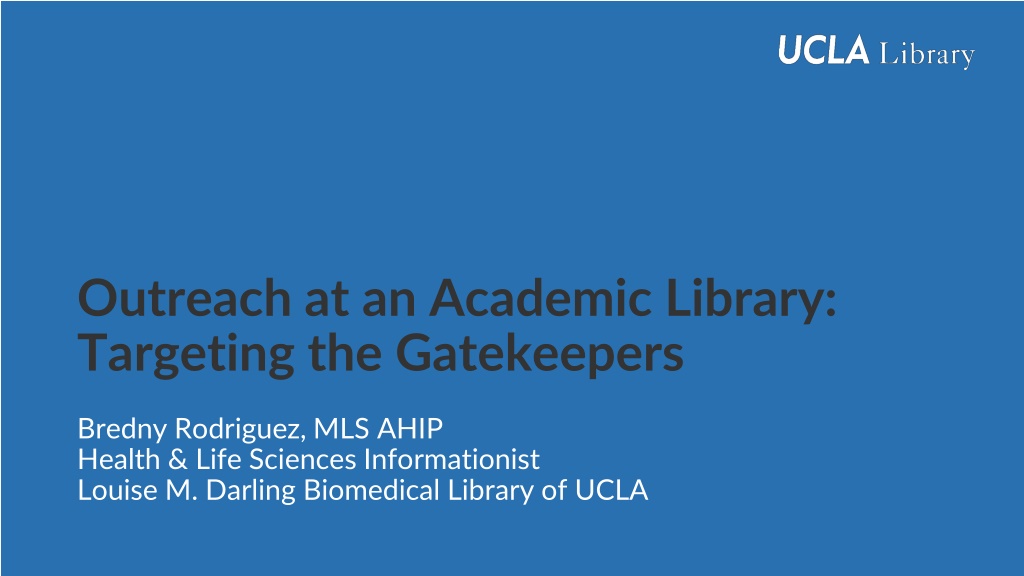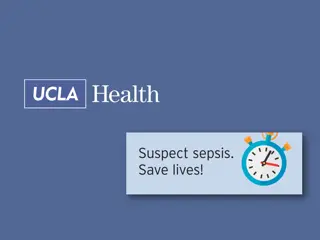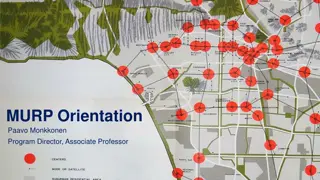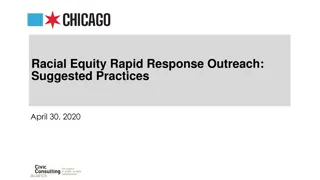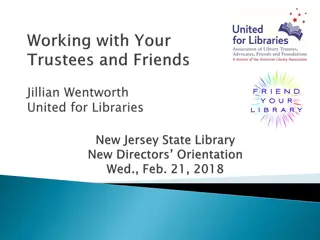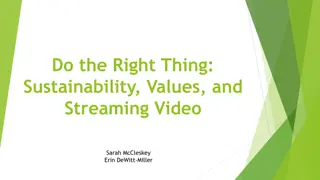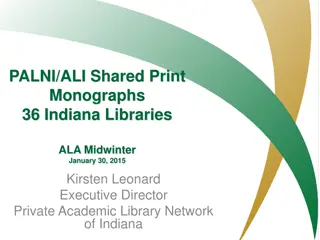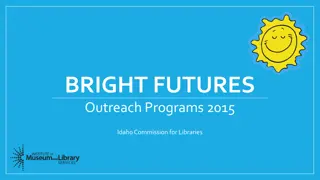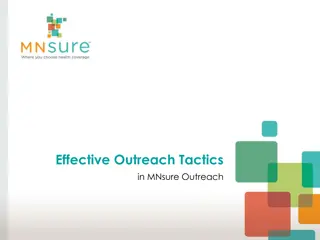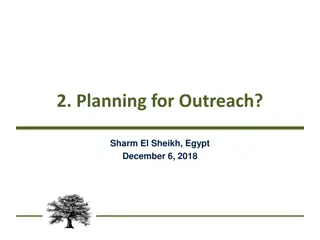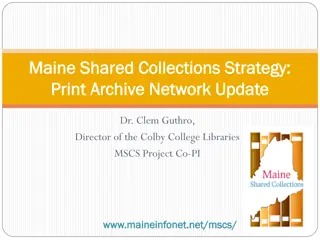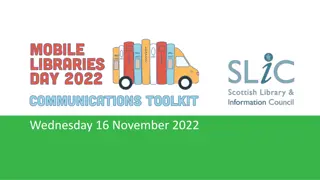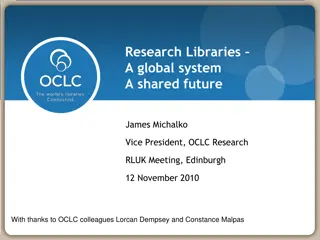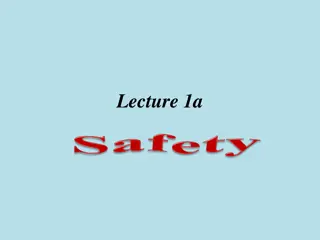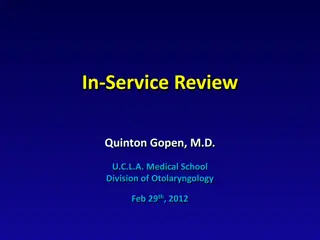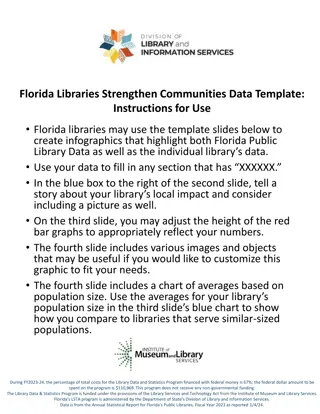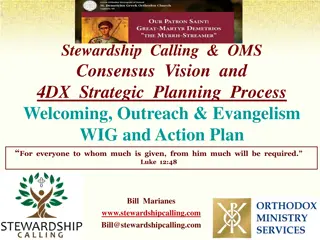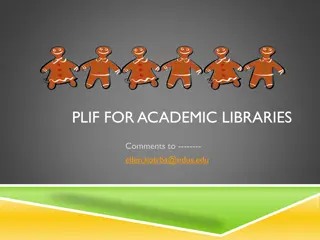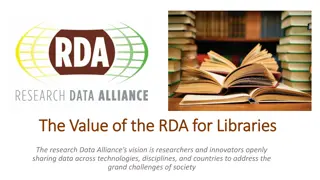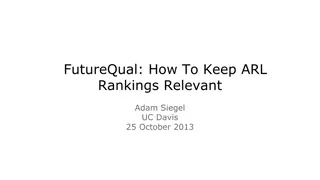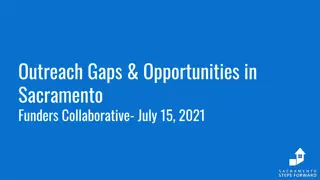Effective Outreach Strategies in Academic Libraries: A Case Study at UCLA
This case study delves into the challenges faced by academic libraries in reaching out to the life sciences faculty, emphasizing the importance of subject background for liaison librarians. It discusses the necessity of raising awareness among faculty members regarding library services and highlights the need for establishing new connections through initiatives like bioethics courses and biomedical research events.
Download Presentation

Please find below an Image/Link to download the presentation.
The content on the website is provided AS IS for your information and personal use only. It may not be sold, licensed, or shared on other websites without obtaining consent from the author. Download presentation by click this link. If you encounter any issues during the download, it is possible that the publisher has removed the file from their server.
E N D
Presentation Transcript
Outreach at an Academic Library: Targeting the Gatekeepers Bredny Rodriguez, MLS AHIP Health & Life Sciences Informationist Louise M. Darling Biomedical Library of UCLA
Case Study at UCLA Subject Liaison Model Louise M. Darling Biomedical Library David Geffen School of Medicine School of Dentistry Fielding School of Public Health School of Nursing Division of Life Sciences Ecology and Evolutionary Biology Microbiology, Immunology, and Molecular Genetics Molecular, Cell, and Developmental Biology Integrative Biology and Physiology Psychology Society and Genetics 2
Case Study at UCLA UCLA Division of the Life Sciences Division numbers: Undergraduate: 12 available majors with about 7000 undergraduates. Graduate: Ph.D. training in 17 distinct fields in the biosciences with about 500 graduate students. Faculty: About 250 teaching faculty spread over 6 academic departments and joint programs with the Schools of Medicine, Dentistry, Public Health, Engineering and Applied Sciences, and the Division of the Physical Sciences. Facilities: 7 Affiliated Institutes & Centers. 3
Outreach to the Life Sciences Challenges Library outreach challenges in the Life Sciences While 57.9% of all faculty respondents did think subject background was necessary to be a good liaison librarian, eight of nine or 88.9% of the College of Agriculture and Life Science faculty representatives agreed that subject background was indeed necessary. Yang, Z. Y. L. (2000). University faculty s perception of a library liaison program: a case study. The Journal of Academic Librarianship,26(2), 124-128. 4
Outreach to the Life Sciences Challenges (cont.) Other considerations: -Curriculum content -Less opportunities for intensive writing assignments and literature research at at the undergraduate level. -Awareness -In the same survey Yang found that even though all liaisons at the library conducted bibliographic instruction, 36.1% of faculty respondents indicated that they were not aware of the service. Yang, Z. Y. L. (2000). University faculty s perception of a library liaison program: a case study. The Journal of Academic Librarianship,26(2), 124-128. 5
Outreach to the Life Sciences New Connections Newly Established Connections -Bioethics Course -120 students taught in Spring 2015 -Biomedical Research Minor Orientation -30 students in Spring 2015 -Biomedical Research Minor Information Fair -15 students in Spring 2015 -Met 4 student affairs officers, 1 faculty affairs officer, and the assistant to a department chair. -Proposed a data management course to the undergraduate Biomedical Research Minor Lab. 7
Outreach to the Life Sciences Outreach Strategies Identify non-faculty departmental staff with direct access to faculty: Student Affairs Officers - SAOs maintain multiple roles within the Division of the Life Sciences at UCLA, including academic counseling, classroom & course scheduling, Administrative Staff and curriculum support. - Responsibilities could include: faculty affairs, departmental budgets and finance, laboratory management and logistics, and events scheduling. 8
Outreach to the Life Sciences Developing a Plan Identifying prospects and Moves Management John Bales describes applying Moves Management - a concept of identifying prospects or the 10 percent who can give 90 percent and developing an comprehensive strategy of clearly defined steps for engagement. Bales, J. G. (2015). Making all the right moves for liaison engagement A strategy for relating to faculty. College & Research Libraries News, 76(10), 550-556. 9
Outreach to the Life Sciences Gatekeeper Findings These non-faculty departmental staff hold vast amounts of useful information. Many staff members have direct and frequent interaction with faculty. Some SAOs have subject knowledge and academic training in the disciplines that they serve. 10
References Cited Bales, J. G. (2015). Making all the right moves for liaison engagement A strategy for relating to faculty. College & Research Libraries News, 76(10), 550-556. Yang, Z. Y. L. (2000). University faculty s perception of a library liaison program: a case study. The Journal of Academic Librarianship, 26(2), 124-128. 12
Questions? Thank You Bredny Rodriguez, MLS AHIP Health & Life Sciences Informationist brednyr@library.ucla.edu Louise M. Darling Biomedical Library of UCLA 13
